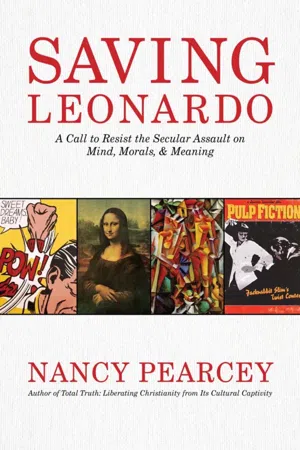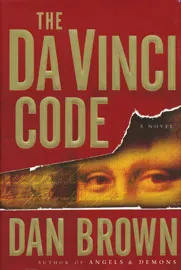![]()
![]()
Chapter One
“Through art we can know another’s view of the universe.”
—Marcel Proust
Are You an Easy Mark?
Hank the Cowdog is a humorous, homespun yarn for kids. Or it was, until the forces of political correctness got hold of it. Children’s author John Erickson has created a dog character with a comic tough-guy swagger, the “Head of Ranch Security” living on a cattle ranch in West Texas. Over the years, I came to know Hank like an old friend because my son Michael is an auditory learner, which drove me to the library shelves in search of books on tape that would appeal to him.
The Hank stories, with their corny humor and mock macho tone, proved to be perfect. Michael would listen by the hour to tapes of Erickson spinning out tales about Hank and his run-ins with a caricatured cast of critters—a stub-tailed sidekick named Drover, an uncouth coyote clan, and a couple of backwoods buzzards. The action is centered on a family ranch owned by High Loper and his wife Sally May, with their son Little Alfred. Working for them is a ranch hand who lives down the road, a bachelor cowboy named Slim Chance (modeled on Erickson himself in younger years).
Stealth Secularism
The down-home rural story proved unacceptable, however, to big-city television executives. Several years ago CBS selected Hank the Cowdog for its “Storybreak” program, a video series based on children’s books to air during Saturday morning cartoons. Initially, Erickson felt honored. When the video was broadcast for the first time, his entire hometown of Perryton, Texas, threw a celebration for its local author. But as Erickson sat down with two hundred schoolchildren to watch the video, he noticed that the story rang false at several points. For one thing, High Loper and Sally May were no longer married. Instead Sally May had been promoted to ranch boss. Loper had been demoted to a ranch hand who worked for her, along with Slim. In fact, all three adults lived together in a kind of bunkhouse.
1-1 John Erickson
Hank the Cowdog
Imposing a secular ideology
What had happened to the family home? For that matter, what had happened to the family? Little Alfred had disappeared completely. Apparently a child was an unwanted nuisance on the CBS version of the ranch. Did I say ranch? No, the cattle ranch had been converted into a chicken farm. And the location was no longer west Texas but Arizona, set against a backdrop of saguaro cacti.
Erickson was puzzled by the drastic changes. “At first I thought someone had made a mistake,” he told me. “Then I realized that at such a high level of professionalism, people don’t make mistakes. The changes had to be intentional.”1 He was right. But it took several years for Erickson to figure out what that intention was.
When he began to read books on Christian worldview, he finally realized what had happened: He had been caught in the crossfire of clashing worldviews. His humorous little story had been subverted by the forces of political correctness. Marriage? A trap for women. Family? An outmoded and oppressive social institution. Children? A barrier to women’s career aspirations. Cattle ranch? A scourge on the environment. So a revised script had been scrabbled together in which Sally May was transformed from ranch wife to ranch boss, ordering around the hired hands instead of raising Little Alfred.
“They had taken the family out of my story!” Erickson was stunned as the implication sank in. “They had removed all traces of the kind of home life that had been a source of strength to me, my parents, my grandparents, and back as far as we could trace our family history.” And for what reason? “Because someone at the network had decided to use a Saturday morning cartoon series—and my Hank book—as a platform for their own ideology.”
Blindsided by CBS
Stories and images can be powerful means for conveying ideas. Every time we read a book or watch a movie, we enter into an imaginative expression of the artist’s worldview. It may be present subtly as a background belief, or expressed overtly as an intentional agenda. But it is there. Writers and artists do not go home at night and study systematic philosophy. Yet they are whole persons who bring their basic assumptions about life into the study or the studio. “Stories offer meaning to the ‘facts’ of life,” writes Robert K. Johnston in Reel Spirituality. They always “have an informing vision, or worldview, embedded in them.”2
When the CBS producers imposed their politically correct worldview on the Hank video, they did not request Erickson’s permission. They did not even notify him. He was simply blindsided. “I am embarrassed that it took me so long to recognize what happened,” Erickson told me. “I don’t like getting whipped. I was an easy mark because I didn’t know I was in a fight.”
What about you? Do you know you are in a fight? Worldviews do not come neatly labeled. They do not ask permission before invading our mental space. Do you have the tools to detect the ideas competing for your allegiance in movies, school textbooks, news broadcasts, and even Saturday morning cartoons? Are you equipped to teach your children, students, and colleagues to recognize the most powerful worldviews of our age?
Or are you an “easy mark”? If so, your work and accomplishments could well be co-opted and redirected by others with their own ideological agenda to impose, as Hank was. And you won’t even know how it happened.
Secularism Goes Global
Among the worldviews competing in America’s pluralistic society, there is one that we all encounter in some form. It has become nearly universal, crossing ethnic, racial, and national boundaries. Sociologists describe it as an emerging global secularism. “There is, without question, a globalized elite culture,” writes sociologist Peter Berger, “an international subculture composed of people with Western-type higher education.” They tend to congregate in large metropolitan areas, so that elites in New York City have essentially the same secular mind-set as their counterparts in London, Tokyo, and Sao Paulo.
These urban elites exert power far out of proportion to their numbers. As Berger writes, “They control the institutions that provide the ‘official’ definitions of reality,” such as law, education, mass media, academia, and advertising.3 In short, they are society’s gatekeepers. People who have the power to control the “‘official’ definitions of reality” are in a position to impose their own private worldview across an entire society.
As a consequence, global secularism is an international worldview that we all need to engage, no matter where we live or work. Political scientist Benjamin Barber dubbed it “McWorld,” a homogenous global culture dominated by McDonalds, Macintosh, and MTV. “Common markets demand a common language,” he explains, “and they produce common behaviors of the kind bred by cosmopolitan city life everywhere.”4
That cosmopolitan lifestyle spills over into small towns and rural areas through television, advertising, music, movies, and fashion. Young people are most likely to be drawn in. Today teenagers in small towns often have more in common with teenagers in big cities than with their own parents, pastors, and teachers. In the words of Timothy Keller, pastor of Redeemer Presbyterian Church in New York City, “It is the culture/values set of world-class cities that is now being transmitted around the globe to every tongue, tribe, people, and nation.”
What does that mean practical terms? It means that “kids in Iowa or even Mexico are becoming more like young adults in L.A. and New York City than they are like adults in their own locales.”5 The sobering implication is that adults in those locales must get up to speed on big-city metropolitan culture if they hope to communicate with their own kids.
The goal of this book is to equip you to detect, decipher, and defeat the monolithic secularism that is spreading rapidly and imposing its values on your family and hometown. We will trace its historical development and analyze its impact on some of the most controversial issues of our day. Because it is propagated through “Western-type higher education” (Berger’s phrase) the best way to get a handle on it is to ask what the universities are teaching. What is taught in the science department, the philosophy department, and the art department shapes a society’s “official definition of reality.” Over time it filters down to the courtroom, the public school classroom, and the Hollywood production studio. Just ask John Erickson.
Da Vinci in the Big Apple
I discovered first hand how the global urban culture filters down when I shared a cab with a young unmarried couple in Manhattan. They were quintessential New Yorkers. He was a financial manager and Jewish. She was a lawyer and Asian. At first she acted aloof and business-like, tapping out messages to clients on her Palm Pilot as the cab plowed into traffic. Eventually, however, we struck up a conversation, and when she learned that I was in New York City to teach for a Christian summer program (World Journalism Institute) she immediately went on the offensive.
1-2 Dan Brown
The Da Vinci Code
Fiction as biblical criticism
“What do you think of Dan Brown’s The Da Vinci Code?” (The book had been out about a year.) “All my friends are losing their faith because of that book. What about you?”
I decided to leave details aside and take aim at the book’s core claim—that the Bible is historically unreliable. Over the blaring horns of New York City traffic, I explained that the New Testament can be tested by exactly the same methods that scholars use to test any other ancient document. For example, historians can compare manuscripts in different languages from all around the Mediterranean world—Egypt, Syria, Turkey, Greece—to see how widely the texts diverge from one another. If variations are minor, then the texts were copied accurately and the version we have today is close to the original. And that is exactly what historians do find. Consequently, they have been able to reconstruct the original text with about 99.5 percent accuracy. There is no evidence that the New Testament texts were doctored or that legendary material was added later.
The young lawyer was intrigued. Then there’s the age of the texts, I explained. We have fourteen thousand fragments of the New Testament, many of them dating from mere decades after it was first written. Compare that to other ancient texts. We have only about ten copies of Caesar’s Gallic Wars, and the earliest is from about one thousand years after it was first written. With Plato and Aristotle, we have even fewer copies, and the time gap is even longer. Yet no one doubts the authenticity of the classical writers. By normal objective standards of historical scholarship, the New Testament text is incredibly accurate. There is nothing else like it in the ancient world.6
What about the Gnostic Gospels? In the novel, Dan Brown claims that the Gnostic Gospels give an earlier (and hence more authentic) account of Jesus’ life, a view that has become widely popular. But professional historians say the Gnostic Gospels were written about a century after the New Testament, not before.
We continued talking all the way to the airport. By the time we arrived forty-five minutes later, the young woman had dropped her Big-City-Lawyer persona and was thanking me warmly. She confided that she had been raised in a church but had never heard Christianity defended by reasons and evidence.
As I stepped out of the cab, it struck me that our conversation had been sparked by a novel, a work of fiction. Yet should that be surprising? After all, where do most people wrestle with the big questions of life—about God, morality, and the meaning of life? Today’s most influential worldviews are born in the universities, but they touch all of us through the books we read, the music we listen to, and the movies we watch. Ideas penetrate our minds most deeply when communicated through the imaginative language of image, story, and symbol. It is cru...



